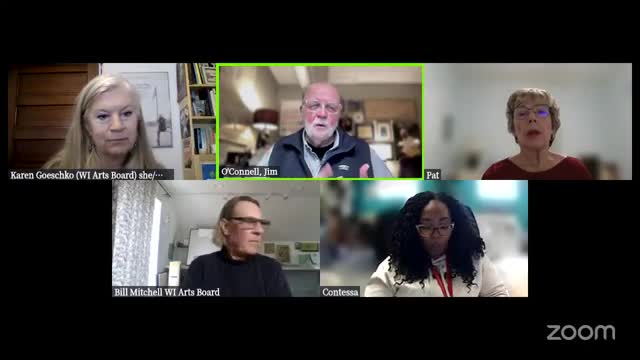Arts organizations urged to innovate or face decline
November 23, 2024 | Wisconsin Arts Board, State Agencies, Executive, Wisconsin
This article was created by AI summarizing key points discussed. AI makes mistakes, so for full details and context, please refer to the video of the full meeting. Please report any errors so we can fix them. Report an error »

During a recent government meeting, discussions centered on the importance of expanding audience engagement and diversifying programming within the arts community. Participants emphasized the need to consider not only those who currently attend events but also those who do not, highlighting the necessity of reaching out to underrepresented groups.
One key point raised was the life cycle of special events, which typically follows a bell-shaped curve. As events become familiar, interest can wane, making it crucial for organizations to continually innovate and introduce new offerings. Failure to do so risks audience disengagement and can lead to a decline in attendance.
The conversation also touched on the significance of ethnic diversity in programming. Members suggested incorporating cultural performances, such as Irish dance or Latino music, to attract a broader audience and provide a richer cultural experience. Engaging with the community to understand their interests was deemed essential, rather than making assumptions about what they might enjoy.
Additionally, the meeting highlighted the enduring appeal of nostalgia in music programming, with many attendees expressing a preference for familiar artists and genres from their youth. While this can draw audiences in, it was noted that organizations should also strive to expose them to new experiences and perspectives.
Overall, the meeting underscored the importance of adaptability and community engagement in the arts, urging organizations to innovate while honoring the tastes of their existing audience. The precarious position of local arts groups, such as Strollers Theatre, was also acknowledged, indicating a need for ongoing support and strategic planning to ensure their sustainability.
One key point raised was the life cycle of special events, which typically follows a bell-shaped curve. As events become familiar, interest can wane, making it crucial for organizations to continually innovate and introduce new offerings. Failure to do so risks audience disengagement and can lead to a decline in attendance.
The conversation also touched on the significance of ethnic diversity in programming. Members suggested incorporating cultural performances, such as Irish dance or Latino music, to attract a broader audience and provide a richer cultural experience. Engaging with the community to understand their interests was deemed essential, rather than making assumptions about what they might enjoy.
Additionally, the meeting highlighted the enduring appeal of nostalgia in music programming, with many attendees expressing a preference for familiar artists and genres from their youth. While this can draw audiences in, it was noted that organizations should also strive to expose them to new experiences and perspectives.
Overall, the meeting underscored the importance of adaptability and community engagement in the arts, urging organizations to innovate while honoring the tastes of their existing audience. The precarious position of local arts groups, such as Strollers Theatre, was also acknowledged, indicating a need for ongoing support and strategic planning to ensure their sustainability.
View full meeting
This article is based on a recent meeting—watch the full video and explore the complete transcript for deeper insights into the discussion.
View full meeting
